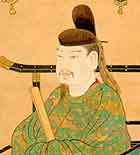Difference Between Japanese and European feudalism

Feudalism may vaguely refer to the form of government made up of a decentralized socio-political system where a weak monarchy tries to take control of territories under it, but not physically part of its kingdom, using reciprocal agreements with the territorial leaders.
A classic definition of feudalism refers to the European political system of the middle ages, which comprised of a set of reciprocal military, as well as legal duties they were obliged to do among the nobles who were warriors. This centered around three concepts of lords, vassals and fiefs.
Although feudalism is largely considered a European invention, a type of feudalism was invented by the Japanese, at about the same period that European feudalism was at its peak, which was completely independent of the European system. It’s important to note that the two feudalistic societies exhibited some shared practices and principles, but nonetheless differed in many important aspects.
The defining feature of a feudalistic society was land ownership, and both the Japanese and Europeans had land owning castes, as well as those that didn’t own land during the medieval time. Unlike European feudalism, Japanese feudalism had no true pyramid form, with a hierarchy of ‘inferior’ nobles being presided over by the monarch. This was mainly due to two facts: Firstly, Japanese authority was as centralized as the case was in the European nation states. Even though the majority of local aristocrats paid the emperor lip-service, Japan’s rugged terrain made it hard for the emperor to have full control of the local aristocracy, making local aristocrats in Japan much more powerful than their European counterparts. Secondly, although Japan’s inferior nobility (samurai) were religiously loyal to their local lords, the lords didn’t give them land to own, while the European nobility got land in exchange for their time in the military. The samurai instead received an income from their local lords, depending on the produce from the lord’s land.
While the samurai may have had servants, they did not work on the lands in the same way as they did in Europe. Knights in Europe had serfs who would tend to their land that they had received from the lords.
The legal structures in the European and Japanese feudalistic governments were obviously radically different. The European system was based on Roman and Germanic law, as well as the Catholic Church, while the Japanese system was based on Chinese Confucian law and Buddhism. Due to these differences, the feudal systems in Europe and Japan developed at different times.
Feudalism was to a large extent established throughout Europe by the 9th century, but it wasn’t until the 12th century that it started to filter into Japanese territory.
Notably, one important similarity between the two systems, was that they were both hereditary caste feudal systems, where peasants had no chance at all of becoming part of the ‘ruling clan’.
Summary:
European feudalism was quite older than the Japanese system, having been established in the 9th and 12th centuries respectively.
The European system was more centralized than the Japanese system, because the Japanese emperor had no full control of the local aristocracy.
European feudalism was based on Germanic law, while Japanese feudalism was based on Chinese Confucian law.
Japanese samurais’ servants didn’t tend to their land like in the case of the serfs of European knights.
- Difference Between Nuts and Bolts - August 2, 2010
- Differences Between Crystal and Gold Silver - August 2, 2010
- Difference Between Crystal Reports and Web Intelligence - August 1, 2010

Hey, that post leaves me flieeng foolish. Kudos to you!
Thank you, i am using some of this information for an essay 🙂
Hey! Me too!
I copy and pasted this for my project… Got an A 😀
Thanks XD
What about plagiarism? Weren’t you supposed to not do that?
stop being such a n00b
In your face, Bob! 😀
lol meh
SAME
That’s called plagiarism
Thanks-a-mundo for the post.Much thanks again. Awesome.
yeha bob
You have no idea how much I love you at the moment
i love u too
._.
thanks for the info
Thank you for the article it helped me a lot
i hope u unlive
DAS NOT NICE YOUR NOT GETTING ON THE GOOD LIST U ARE ON DA BAD LIST TODAY
that’s not nice
Thanks. used this info for a class webquest.